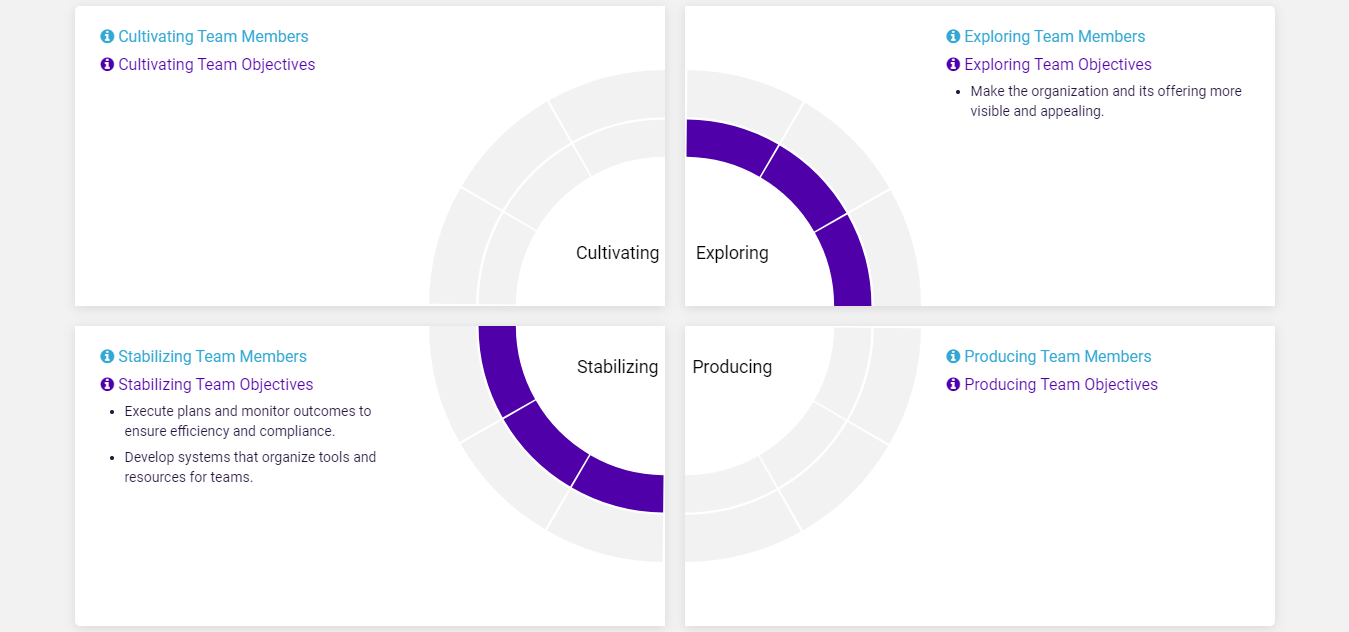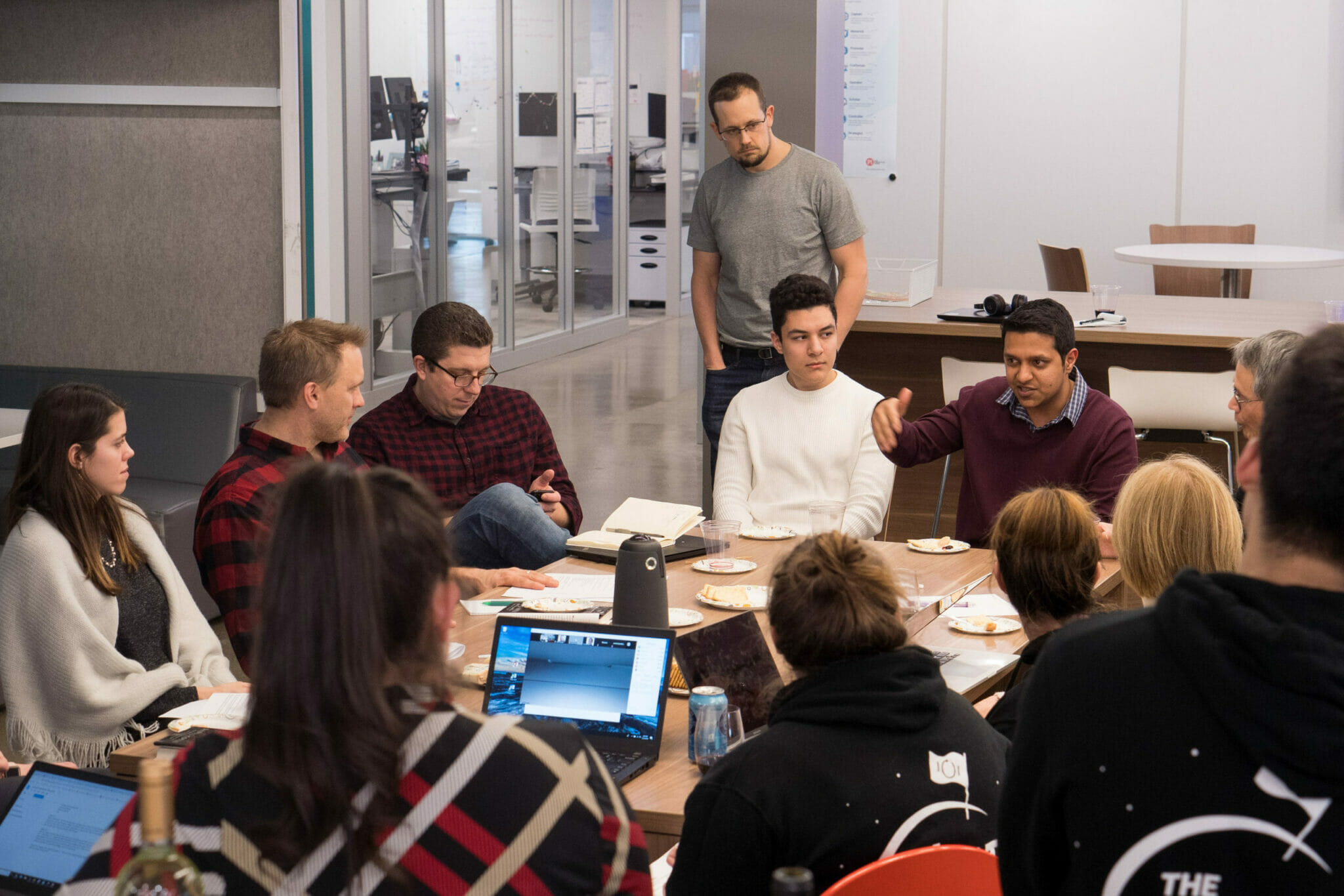Don’t let anyone fool you—company culture can be tough to define with a remote workforce. It takes a concerted effort, and even if you have flexible, experienced people, you still straddle a fine line.
Go too heavy on the perks and icebreakers and you might come off as contrived. But remote teams require you to engage more deliberately and codify additional guidelines. Not doing so means running the risk of employee disengagement and jeopardizing productivity.
Staying resilient means being empathetic to people who might be uncomfortable with a remote setup, while setting ground rules and remaining true to your identity. If you’ve already established great company culture, retaining it is essential to providing a sense of normalcy. If you haven’t, good news: This may be an opportune time to focus on team building and company values.
Whether your remote employees are totally new to this or you’ve had a distributed team for some time, there are a few key principles to follow. Building and maintaining culture in remote teams hinges upon:
- Clarifying communication channels
- Collecting timely feedback
- Integrating new team members
- Aligning with company values
Not every employee responds to remote work the same way. You can’t inspire people in a remote company—even just a temporary one—with a one-size-fits-all approach.

With different behavioral profiles in mind, prioritize the following:
Clarifying communication channels
Many businesses that are less accustomed to remote work lament losing “water cooler talk” when they’re out of the physical office. And there’s something to this. If part of your strong culture is a sense of enthusiasm derived from seeing each other in the hallways, providing updates on the fly, you’ll want to replicate this in some form.
The good news is that a virtual setup forces you to think about what’s most effective. This is the time to establish how people ought to communicate efficiently. Try to maintain each in-office interaction with a simple-to-use virtual substitute. For example:
- Conference room meetings go on the calendar as video conferencing events.
- 1 on 1s with managers take place via Skype.
- Water cooler talk is conducted over Slack.
- Email is used for the same purposes as it would be in the office.
The more replications you can manage, the more relieved your employees will feel. It won’t be the same, granted. But if you can foster a sense of familiarity through calendar continuity, it will go a long way toward reassuring people the company culture hasn’t eroded. You still are who you are, and though the circumstances and logistics may have changed, your principles will not.
On a tactical level, effective remote team communication also comes down to:
- Clearly defining task or project management
- Encouraging collaboration to combat isolation and siloed work
- Offering regular opportunities for check-ins
- Over-communicating when in doubt
Join 10,000 companies solving the most complex people problems with PI.
Hire the right people, inspire their best work, design dream teams, and sustain engagement for the long haul.
Collecting timely feedback
This is where one size does not fit all. Employee engagement is always pivotal, but it’s a task made more difficult for managers when a team is distributed—or worse, splintered by rightsizing. Motivating remote workers starts with understanding their behavioral drives, and how they might be stretched under these conditions.
But it’s not just managers who should collect feedback. Especially when remote employees are navigating a crisis, it’s incumbent upon leadership to actively gauge people’s temperatures. In doing so, you stay true to your company culture.
If transparency is your mantra, keep people in the loop. It may feel a little awkward doing so via video or a Zoom call, but employees will appreciate the effort at consistency. You can also make use of:
- Employee engagement surveys
- Regular all-company webinars
- Slack channels for team-specific messaging
Sometimes the message will dictate the medium. If you’re polling people on how they feel about postponing a quarterly party, that can be done less formally (i.e., on Slack or via a tool like Mentimeter). But if you’re soliciting feedback around expense cuts, that’s probably better suited for a recorded message or email documentation.
The worst thing you can do is not collect feedback. Different people will respond better to joining mass video calls. You may need to create extra time (in smaller groups) to ensure your more reserved people are heard. That’s still far preferable to leaving them in the dark or letting their disengagement fester.
Working remotely can bring real isolation risks, which are compounded by social distancing. Treat your people with respect and empathy, understanding that even if the feedback isn’t positive, it benefits their mental health and well being to simply have it heard.
Just as important, be open to the feedback when it’s received. The post-COVID business world remains highly uncertain, but a couple things seem clear: Remote teams are here to stay, and companies who aren’t embracing the virtual workforce transition risk being left behind. Rather than buck against what’s no longer a “trend,” be receptive toward (and prepared to act on) what your remote employees say is working and what’s not.
The move to distributed working arrangements has been and will be an ongoing trend in business. Updating work practices now, however, will position companies to take advantage of the new opportunities provided by distributed work. by @Nerdery #remotework https://t.co/Ek0VFyt9X7 pic.twitter.com/kG1qcDtvqS
— Aleš Kohek (@AlesKohek) May 14, 2020
Integrating new team members
Team building while remote is already challenging, but doing so with new members adds another layer of complexity. Whether you’re onboarding someone who’s completely new to the organization, or integrating new people in the wake of a restructuring, you’ll need to address it head on. A lack of interactions could stunt that person’s growth if you don’t make a concerted effort to support them.
One way to nip this in the bud is by focusing on the new team, as opposed to a new person. Start simple: Create a new Slack channel for the group in its new form. From there, institute a daily stand-up so everyone has a chance to see each other’s faces in a more casual setting. Make sure new team members can share what they’re working on, while still taking the time to get to know each other through casual icebreakers or games.
Training totally new remote workers can be a heavier lift, particularly if this wasn’t the expected onboarding process. You’ll need to balance check-ins with the remote employee’s preferred pace, giving the person opportunities to learn and ask questions without feeling crowded or micromanaged.
From there, you can implement additional remote team building activities as you see fit. But bear in mind the behavioral makeup of your new people—as well as how their strongest drives might balance and complement other members of the team. Your best intentions can be misguided if you stretch people too far or too soon. New remote team members are already absorbing plenty of change as it is.
That’s not to say team building exercises can’t be fruitful. Maybe you have two remote team members who share high extraversion drives. One is in New York and the other is in Seattle, but both have been thrust into new positions and are struggling with the lack of in-office conversations. Set them up with a virtual coffee check-in, or encourage them to do so on their own. (Just make sure to account for the different time zones.)
Team building in a virtual setup is often about making sure people have what they need. Taking that extra moment to check in and ask “Does that work for you?” can go a long way toward promoting unity and keeping remote workers engaged.

Aligning with company values
The best way to maintain camaraderie when everyone’s remote is to embody your established values. Whether yours is a large company with multiple offices around the world, or a smaller operation that’s been dispersed locally, focus on the positive attributes that make your organization unique.
In aiming to align your remote culture with company values, ask yourself:
- Have we clearly stated our current organizational goals?
- Are our virtual meetings and conversations tracking to one of those goals?
- Do we share information consistently, even if it’s through new channels?
- Are we being empathetic and self-aware?
The last point is key in that it pertains differently to remote teams. Especially if your remote employees are new to this and/or doing it indefinitely, you’ll want to devote extra time to this value proposition. Remote work-life balance is complicated, and employees may not realize they’re struggling with something until someone else brings it to their attention.
Talk about logistical complications and distractions, whether that means homeschooling kids or a new HDMI cable. And remember that it’s okay not to have an immediate solution. Self-aware leaders have the courage to be vulnerable and admit when they don’t have all the answers. That goes for the entire remote workforce, regardless of their standing in the business.
This is where strong leadership and a well-established company culture really shine through. You’ll have a smoother time transferring values to a remote workforce if there’s already an understanding and buy-in of what’s expected.
Maybe one of your core values is trust (that’s a good one). With that foundation, people will be more likely to assume good intentions, work together, and overlook what might otherwise be misconstrued as a terse or tone-deaf virtual message.
Distributed teams can establish trust from scratch, too, but it must be practiced. Take the time to articulate your core values, whether in a daily team stand-up or broader company forum. Remind each other that you’re on the same team, working toward the same goals. Some conflict and disagreement are healthy when rooted in a desire to achieve common objectives.
Inspiring resilient remote teams
The process of building culture is ongoing. It won’t stop because you’ve established a strong foundation, and that’s especially true if you’re facing an indefinite future, with the number of remote employees fluctuating over time.
Employee management tools can bolster culture efforts as well, offering relationship guides and deeper insights for managers looking to stabilize their changing teams. They also help re-familiarize company leaders with employees’ behavioral drives and how they might manifest within virtual teams.
By leveraging these tools while practicing the above principles, you’ll set your culture up to be more transferable—no matter how complicated or turbulent the outside factors remain.








